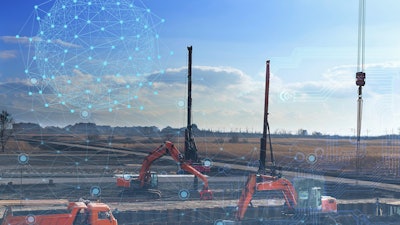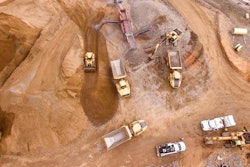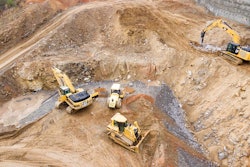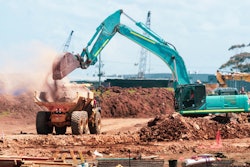
There are many factors which will drive the global construction equipment industry in the coming years. Industry veteran Carl Gustaf Goransson explains how distribution, digitization, and electrification will decide the future victors in the global construction equipment sector.
The Q&A is part of an ongoing interview series led by Callum Sarsfield, Founding Partner at Pullmann Global.
What do you see as the biggest growth drivers within the international Construction Equipment sector?
Ordinarily we would see market demand alone driving volume growth, but today other factors are coming into play. If we disregard the short-term impact of COVID-19 as an extraordinary event, the industry will be shaped by a combination of:
- Infrastructure investment that supports climate change.
- Digitization.
- Regulations on emissions, noise, and transport.
Creating modern infrastructure and replacing older inefficient systems will be driven with a much higher regard to climate change in the future, especially in the European and North American markets. Increasing urbanization will also drive market growth – by 2050 close to 70% of the world’s population are expected to live in urbanized areas, up from a little over half (55%) today. Big machines don’t always work well in inner cities, so one product category we see growing fast is compact equipment, especially mini excavators, and compact tracked loaders. The great unknown is legislation: if emission, noise and transport regulations toughen or harmonize quickly, the replacement cycle away from traditional diesel power combustion engine into new electromobility will accelerate.
COVID-19 aside, what markets do you expect significant growth from beyond 2020?
From a volume perspective, of the top eight markets in the world the strongest growth will come from India. With the second largest population in the world, the country is going through an industrial and technological evolution that will drive the need for investments in infrastructure and energy supply. This is already happening – 25-30 km of railway are being laid every day, alongside new road networks connecting major conurbations and airport construction.
While India will grow fastest, China is set to remain the largest market in the world for a foreseeable future. We don’t expect to see much change in the rankings of the other markets. North America, Germany, UK, Italy, France and Japan all have a large installed base, economies of scale and a variety of jobs that require all types of machinery.
What about other emerging economies?
There is a lot of potential for Brazil to move up the ladder, as the country returns to a reasonable level of economic stability and growth. The long recession has left infrastructure in the country, especially roads, massively underfunded. This could present a large opportunity for the construction equipment industry.
How is the distribution of equipment set to change?
The role of distribution will play a key role for the future – but it does involve considerable change. With better access to improved data quality – available in real time – dealers should aim to capture more of the aftermarket business. Thanks to increased competition, we also expect to see consolidation in the distribution network – meaning dealers will transition towards a multi-brand strategy from today’s largely single brand exclusivity, diluting dealers’ brand association. At the other end of the scale you will see more specialized dealers, e.g. dealers focusing solely on compact equipment in urban areas.
Do you foresee the relationship between OEMs, dealer and end customer becoming closer?
This is a developing trend that will accelerate in the next 5 years, as data transparency and digitization act as a catalyst in driving interaction between the three parties. For example, OEMs are heavily investing in uptime support teams that are available 24/7 to the end customer. OEMs are also publishing operating hours on their entire fleet, information that is publicly available. Information like this will drive transparency and help achieve greater uptime, productivity and product efficiency. These services provided by the OEM are being driven by increased digitization, which is drawing the relationship between OEM, dealer and customer closer.
What will be the impact on Manufacturers’ product strategy?
Compact track loaders have gained ground, mainly in North America, but are also starting to grow in popularity in other parts of the world. Mini excavators have proven their versatility and agility and are now one of the largest product categories in the world. Here we will most likely see more variants and optimization of the weight classes. Telehandlers will continue to grow as a concept also. Looking at traditionally large segments, we see declining volumes in products like the backhoe loader, which will continue to lose share to other products like compact loaders and mini excavators.
On the large excavator side, we are likely to see new concepts, especially on hydraulics efficiency and new short tail-swing concepts for larger machines above 30-ton operating weight. Finally, the coming regulations will drive technologies such as alternative propulsion i.e. electrification on a larger scale.
Digitization and Big Data could transition the sector from a product-centric business model to product-as-a-service alternative. Do you feel the construction equipment sector is taking advantage of this?
Until now, I think construction has not fully embraced the potential of digitization and Big Data. If you look at the agricultural business, it is a field-centric focused operation, meaning through data utilization, the farmer can optimize field productivity in terms of tons of corn per acre etc. The tractor or harvester becomes the focal point for data extraction, allowing the farmer to capture and analyze data to drive efficiency and overall performance.
Until now, the data available within the Construction Equipment sector has been product focused; liters/hour, oil pressure, gear shifts/hour, average rpm etc. Now the trend is becoming more about productivity and uptime. With more efficient data extraction and analysis capability, we will see newly developed services and processes driving data commercialization, alongside entirely new revenue stream. These will cover proactive maintenance planning and scheduling, capacity utilization and optimization, and integrated parts ordering involving the complete supply chain. This trend will further drive OEM and dealer integration in how they engage customers with an all-new product and service offering.
What regulations will act as industry drivers and how do they differ by region?
Besides noise regulations, there will be a continued emphasis on emission regulations to drive a better climate. We see significant variation from region to region, with Europe, Scandinavia and China driving legislation in favor of cleaner power sources, electrification being a key example, and other regions such as North America, India and other parts of Asia developing at a much slower pace.
That said, we see the development in electrification moving at a high pace within certain construction equipment product groups and applications. Already the electrification concept has made inroads on compact and handheld equipment.
We predict rapid growth in this area, assuming continued development on cost, battery performance and weight – all of which will make this option more attractive for the customer.
The current oil surplus/demand slump has triggered low fuel prices; how will this impact the industry?
Short and mid-term continued low oil prices will be beneficial for the construction industry and its current global fleet. This perceived advantage may not last, as emissions regulation will have a bigger impact on the shift to alternative fuel sources than the spot oil price. There is also scope for new fuels to make inroads in the coming decade, extending the use of internal combustion engines, and extending the second life of the used fleet currently under stage IIIB and Stage IV standards. An example of this is Africa, where a supply of high-quality fuel with lower sulfur levels could allow the current fleet of machines in North America and Europe to operate there.)
Assuming a world of sustained modest oil prices, do you foresee India following China’s path towards electrification?
India is approximately a quarter the size (21-25%) of China's total market, with a total volume market of 82,000 units. Several factors will play a role in electrification in India.
The most important one is the availability of electricity. If electric consumption were to spike, as things stand, there is a substantial lack of infrastructure to meet that energy requirement in India. As a result, unless there is large-scale infrastructure investment in sustainable and cleaner power sources the growth of electrification will be limited in India.
The speed at which electrification and other alternative power sources will be implemented, largely depends on government legislation, investment capability, and oil price. Historically, periods of low oil price have tended to slow down the adoption of alternative power sources in developing countries. However, I do feel with technological advancements, alternative power sources are becoming more economical in comparison to fossil fuels and we foresee this trend picking up pace over the medium term. India will move towards electrification but at much slower rate than China.
Which market do you feel will lead the recovery and why?
With large stimulus measures already in place China is leading the way out of the current 2020 market slump, and there are clear indications of strong future growth potential. Despite the short-term impact of COVID 19 on India’s construction market, we see steady market growth in the mid-to-long term, driven by its burgeoning infrastructure needs.  Carl Gustaf GoranssonPullman Global
Carl Gustaf GoranssonPullman Global
About the author
A seasoned global executive, Carl Gustaf Göransson has worked in the construction equipment industry for over 25 years. Most recently, he was Global President Construction for CNH Industrial and a member of the CNH Global Executive Council. Prior to that he was Senior Vice President Sales, Markets and Services with Cargotec’s Hiab Brand, and President European Central Construction Equipment with Volvo Construction Equipment.




















